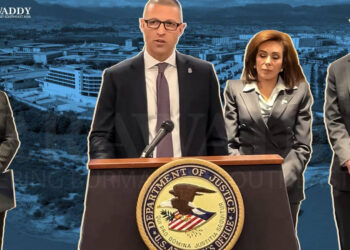In November 1885 Burma’s last monarch, King Thibaw, and his queen were transported by a British flotilla from Mandalay into exile in India, where the King spent the rest of his lives. Burma soon became a colony of the British.
Thibaw was no doubt a feeble and despotic king, and was often described as such in the British press. But the new foreign rulers were not welcomed with open arms; instead they faced uprisings and deep resentment. Seeing the empty Lion Throne in the palace deeply insulted the Burmese people.
Colonialism began with the looting of the grand Golden Palace in Mandalay, the extrajudicial killings of rebels and “dacoits”, chaos, confusion and a breakdown in law and order. Not to mention the story of the British officers and soldiers who carried away the royal treasures as chronicled in “The King in Exile” by Sudha Shah. The country later witnessed Britain’s systematic exploitation of its resources including teak, oil and agricultural products, as the colonial economy linked Myanmar to global markets.
Back in Mandalay, the rebellion did not begin with an upheaval, but developed into a sustained armed resistance, one the British combated with a brutal military strategy throughout the colony for many years. Rebel leaders were captured and beheaded or hanged after sham trials. Villagers suspected of harboring sympathizers were burned and their inhabitants forcibly relocated.
After losing its king, the country was subsequently annexed to India, causing deep insult to the people.
Colonialism left the nation divided and destroyed. Deploying their notorious divide-and-rule strategy, the British created a frontier area and divided it among ethnic minorities and majority Burmans. This was the beginning of the ethnic-based nationalism that lingers to this day as a legacy of British rule. Still, people and authorities often discussed migration to the Northern Arakan border area under British rule, as colonial authorities applied the divide-and-rule policy to govern the local Arakanese and the migrant Muslim population from the Chittagong Hills. We have recently seen renewed violence in this area.
Unsurprisingly, it was under British rule that Burma first witnessed major riots and massacres of the Indian migrant population brought in by the foreign rulers. Under British occupation, Indians were brought in to serve in the administration and in the army. As a result, the country witnessed a series of anti-Indian riots beginning in 1930. Moreover, to keep the majority Burmans, who were perceived as rebellious and disloyal, at bay, local ethnic groups were invited to serve in the colonial army and administration.
Then came the independence struggle of the 1930s, led by local politicians and student activists and ultimately culminating in Burma’s hard-won independence; but not before the Japanese occupation of the country and subsequent battles between two foreign powers, the Allied forces and the Japanese, further devastated the country. This was a war between two colonizers, not between Burmans and ethnic groups.
Aung San, the father of current State Counsellor Daw Aung San Suu Kyi, negotiated with the British to reclaim independence. In July 1947, months before national independence was finally restored, Aung San and his cabinet members were gunned down by political rivals backed by British officers. U Saw, a former prime minister, was hanged along with his accomplices.
Even today the degree of British involvement in the conspiracy and the identity of those behind the assassination of Aung San is a topic of debate among Myanmar citizens and intellectuals, and has been the topic of numerous books, essays and research papers.
On Jan. 4, 1948, at 4:20 am – thought to be an astrologically auspicious hour – Myanmar became an independent nation. But how auspicious was it? The new country was plunged into civil war and violence. Myanmar citizens have celebrated Independence Day annually for seven decades but the degree to which the country enjoys genuine independence is still in question and the subject of heated debate among the nation’s people and ethnic groups.
For 70 years the country has seen civil war, foreign aggression in the North in the 1950s, and then the dictatorship led by Ne Win, who seized power in 1962 and ruled until 1988. The country was in self-imposed isolation for decades. The socialist regime was ended by a nationwide uprising in 1988 but only after a bloody crackdown, which saw a new regime come to power and rule the country for decades. However, one can point to democratic periods when people felt free and saw the beginnings of prosperity in some parts of Myanmar in the 1950s under the leadership of Prime Minister U Nu. Sadly, this did not last long.
It is important to reflect on the legacy of the colonial period and understand how this disaster brought the country into chaos and increased division. Its legacy of ongoing strife, instability and ethnic and racial division means that the country needs strong, ruled-based leadership – but not a return to military rule – to keep the country together and moving forward. Who doesn’t want peace, stability and prosperity for Myanmar? What, then, is the real, nagging core issue that keeps the country in a failed state?
The debate over whether Myanmar is really free and independent is a healthy one, and we would do well to reflect on the colonial legacy and learn from the past and from our history.

















